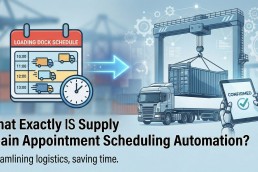Automating the Response to Supply Chain Disruptions

Supply chain management has traditionally placed a strong emphasis on planning and predictability. Companies invest heavily in forecasting, establishing the right partnerships, and defining robust processes to ensure smooth operations. However, the reality of the world is that disruptions are inevitable. These are often events “that are really out of your control,” not contained “within your four walls”. Examples might include unforeseen weather events, geopolitical issues, or sudden changes in capacity availability.
While planning sets the course, the ability to effectively navigate these disruptions falls under the domain of “execution”. This is where the focus shifts from prediction to reaction. How does a supply chain respond when the unexpected happens?
This is precisely where automation plays a critical role in the execution phase. Effective disruption management requires rapid communication and collaboration among various parties. These parties are often “key stakeholders across different organizations and teams”. This could include internal teams like operations, sales, and logistics, as well as external partners like carriers, shippers, and receivers.
Automation designed for execution during disruptions aims to facilitate this essential collaboration. By connecting these diverse stakeholders and providing them with necessary information and tools, automation enables them to “be able to respond quickly to solve” the issues that arise. Waiting for manual communication chains or relying on fragmented information sources can significantly slow down the response, exacerbating the impact of the disruption.
The ultimate goal of automating the execution response is not just to react, but to do so efficiently enough that the disruption does not derail the overall strategy. By quickly solving problems, the business can “continue on that path of achieving your goals that you had set forward from a predictability standpoint”. Automation in this context acts as a resilience layer, ensuring that despite external shocks, the supply chain can adapt, recover, and stay aligned with its planned objectives. It shifts the focus from hoping disruptions won’t happen to building the capability to execute effectively when they do.


